USB-C Introduction: What You Really Need to Know About the Connector Taking Over the World
USB connectors and cables are now commonly known and widely used. The USB connector many people are most familiar with is probably the bulky, rectangular USB-A (or USB Type-A) connector that tends to take a couple of tries to plug in correctly. However, since its inception in late 2014, more and more users have found a new type of USB connector, the USB-C (or USB Type-C) connector, gradually working its way into their lives. The USB-C connector shares the name of its predecessors, but there is still a lot of confusion over its features and functionality.
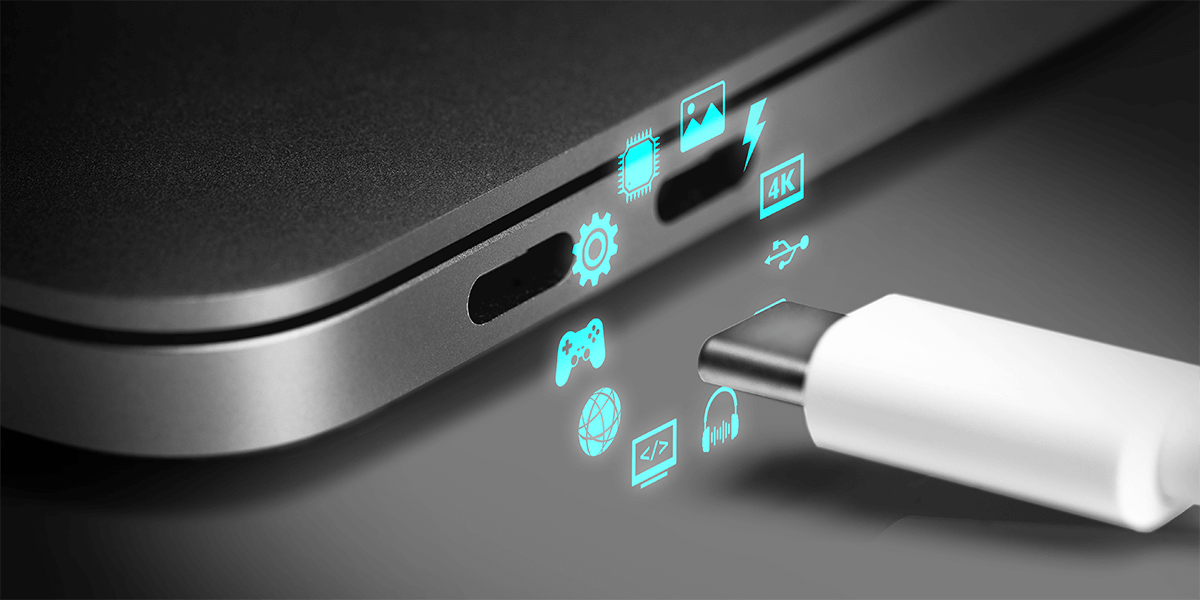
So, what exactly is the USB-C connector? This article will help answer the following questions:
What is USB-C?

USB-C is the latest iteration of the USB interface’s connector developed by the USB Implementers Forum. The USB-C was created to be the definitive connector for all consumer electronic users, so that any and all devices could utilize the same connector to transmit data and/or power. Physically speaking, it features 24-pins within an oval-like design. It’s about half the size of the earlier version and commonly used USB-A connector, and roughly equivalent to the size of a Micro-USB connector.
Because of the overarching goal of making USB-C as universal as possible, the engineering behind the USB-C connector was meant to support a wide variety of specifications beyond the standard USB transmission specifications. Some even describe the goal of the USB-C as being “one connector to rule them all”. Perhaps the connector was meant to act as a blank canvas for various data and power transmission interfaces to apply their technology.
The USB-C connector's design gives it four distinct capabilities:
NOTE: USB-C is a designation of the connector’s physical interface (its design and form factor) and should not be confused with USB versions, such as “USB 3.2”, which govern data and power transfer specifications.
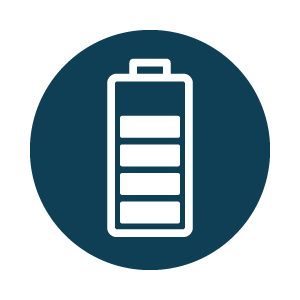



Power Delivery (PD) Type-C Alternate Mode USB If
Whereas USB-A connectors have to be plugged into their ports in a specific orientation, the symmetry of the oval shaped USB-C connector head, along with the pin configuration within it, allows the USB-C connector to be completely reversible. It can be plugged in any orientation, thereby adding a greater level of convenience to the already widely enjoyed functionality of the USB interface.
Are all USB-C capabilities supported on every USB-C product?
Despite all the capabilities described above, it is important to note that not all USB-C products support USB-C’s full functions. Of the four features listed, only connector reversibility is a feature inherent in all USB-C connectors/ports. For the remaining three capabilities, their level of support depends on the cost-related hardware decisions made by the manufacturers of the products utilizing them. By design the USB-C has flexibility that allows manufacturers to pick-and-choose the level of USB-C functionality available in their product designs. Brands who might want to target a low-to-mid price point, the USB-C port on their product might only support the data speeds of the newest version of the USB specifications (USB 3.2 Gen2). But, a brand more focused on the high-end market might have products with USB-C ports that support Power Delivery 3.0 and Thunderbolt Alt-Mode.
What is USB-C Display Port (DP Alt Mode)?
One of the main draws for USB-C, as well as one of the main sources of confusion, is its Alt Mode capability. As described above, Alt Mode allows USB-C ports to transfer data/video via multiple interfaces, including the increasingly popular Display Port video interface. USB-C ports capable of transferring Display Port signals are either called USB-C Display Port or DP Alt Mode. They allow you to connect video sources (e.g. PCs, Blu-Ray players, etc.) and display devices (e.g. TVs, projectors, etc.) that support Display Port to each other via their USB-C ports to broadcast high-definition video.
The confusion over USB-C Display Port arises because not all USB-C ports feature Display Port Alt Mode functionality (as explained in the previous section) and because of the lack of clarity many brands provide over the level of support their USB-C products have with regards to Display Port functionality. As a consequence, a lot of users with devices that feature USB-C ports are entirely unaware of whether or not those ports support Display Port over USB-C. The key for these users is to understand how to identify whether their USB-C device supports Display Port over USB-C.
How do you identify whether a device with a USB-C port supports Display Port over USB-C ?
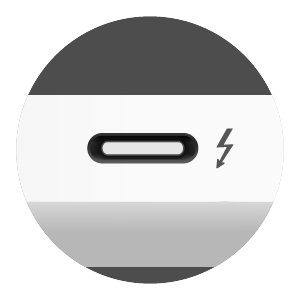
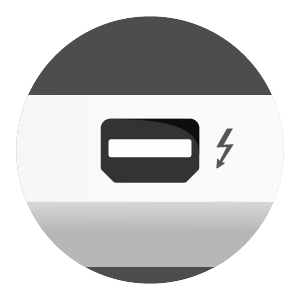
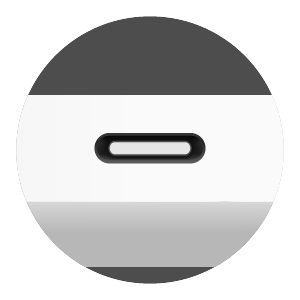
USB 3.1 Type C Thunderbolt 1&2 Thunderbolt 3 Type C
Given the confusion over USB-C Display Port, the next logical question is “How do I know if my device supports Display Port over USB-C?”. There is currently no standard way to identify a USB-C Display Port directly on the device, and some brands don’t even bother printing the Display Port logo on the ports that support it for their products. The best method to decipher whether your device supports Display Port over USB-C is to check either the product specs on the manufacturer’s official website or to check websites with in-depth product reviews and/or information. Within those sites you’ll be able to find detailed breakdowns of each port on the device.
USB Type-C in the Real World (Laptop)
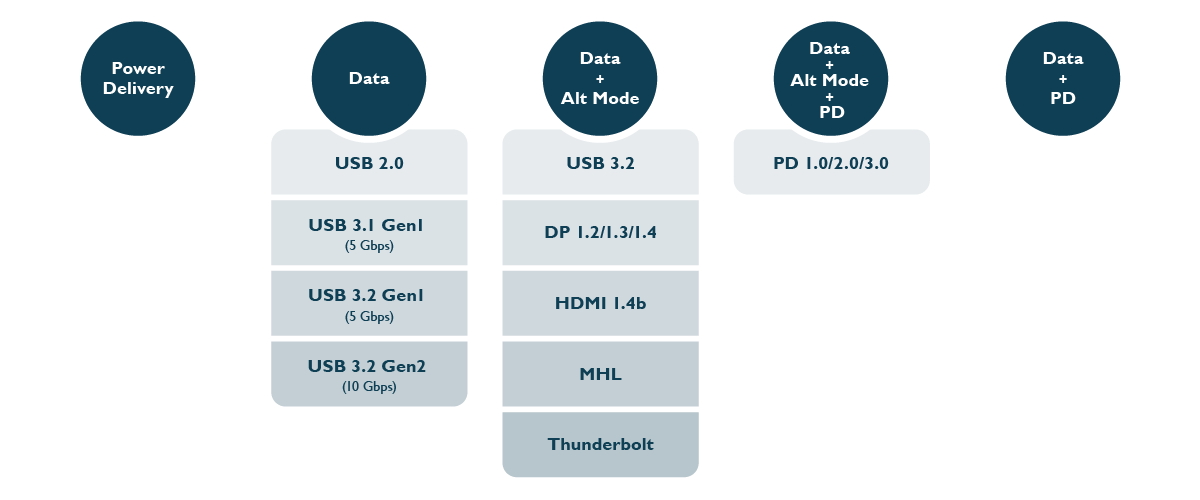
*Not all laptops and mobile phones with USB-C ports support full USB-C function.
**Laptops and mobile phones have different combinations of USB-C functions.
Due to the various specifications and compatibility of the Type-C connector, the ultimate solution with its smart self-detecting technology, which can automatically show whether your laptop or mobile device with Type-C port supports Alt Mode output and therefore provide better intuition within your user experience.
Are USB-C and Thunderbolt compatible?
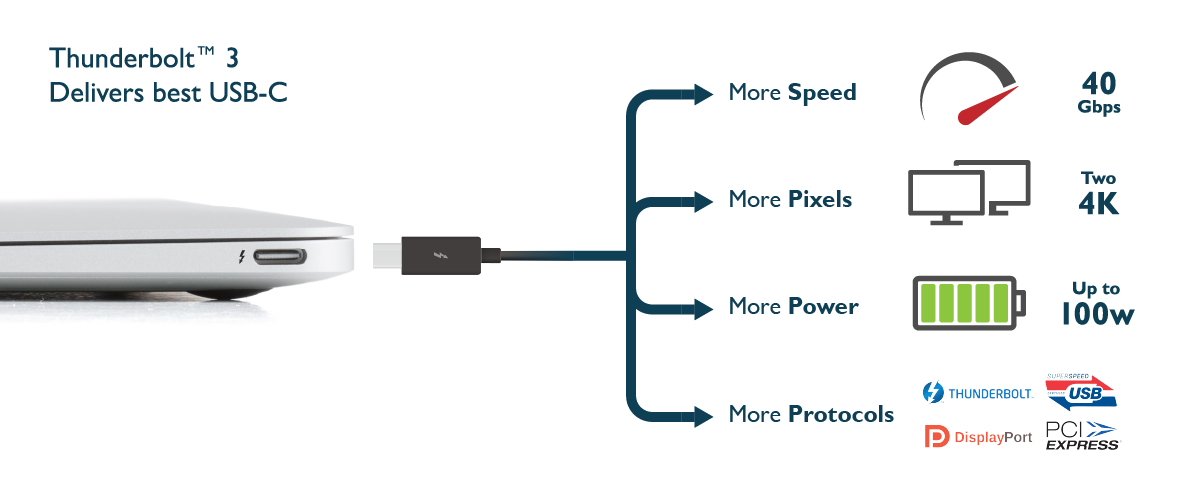
Similar to the confusion around USB-C DisplayPort Alt Mode, there is confusion around whether USB-C and the Thunderbolt transfer interface made popular by Apple products are compatible. The simple answer is that its Alt-Mode functionality also allows USB-C to support the Thunderbolt 3 version of the Thunderbolt interface.
Just like not all USB-C ports feature DisplayPort Alt Mode functionality, not all USB-C ports feature Thunderbolt 3 functionality. Thunderbolt 3 functionality must be explicitly designed into a device’s USB-C port by its manufacturer in order for the USB-C port to be able to support Thunderbolt 3 connections.
For Mac users, the newer generation of Macs, including the iMac Pro, iMac 2017, Mac Mini 2018, MacBook Air 2018, and all MacBook Pros released from 2016 on, do support USB-C Thunderbolt 3 ports. However, it’s worth double-checking official product specs, especially for non-Mac users, to confirm the level of support for the device’s USB-C ports.
NOTE: Thunderbolt 3 ports require the use of Thunderbolt 3 cables in order for their transmissions to work.
One last item of note for users of devices with Thunderbolt 3 ports. Thunderbolt 3 itself also supports DisplayPort functionality. This means Thunderbolt 3 ports also will be able to transmit video to DisplayPort devices.